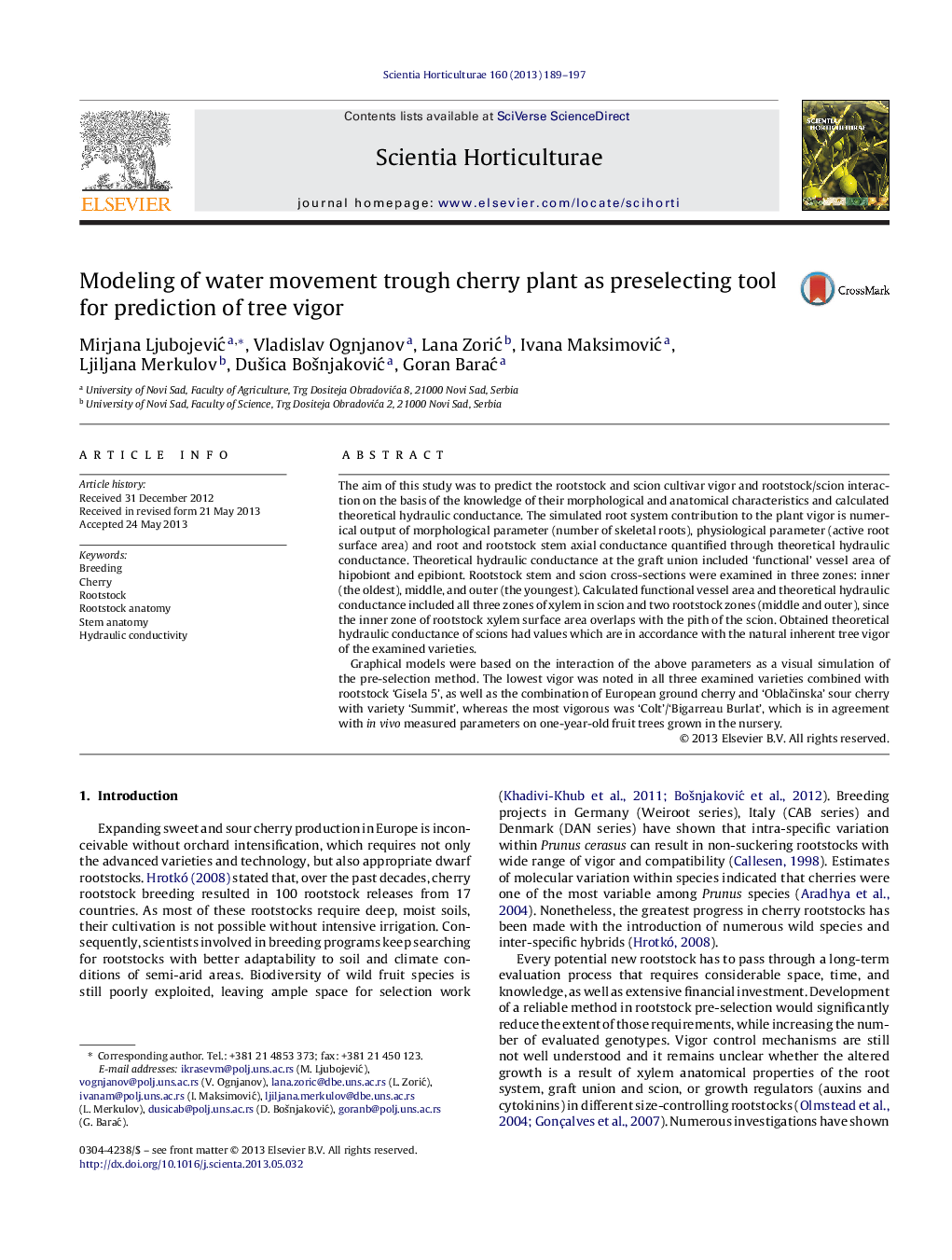| Article ID | Journal | Published Year | Pages | File Type |
|---|---|---|---|---|
| 4566970 | Scientia Horticulturae | 2013 | 9 Pages |
•Cherry plant constituents were examined to identify the sources of water resistance.•Plant material consisted of six rootstocks and three varieties.•The effective root conductance resulted from its morphology and anatomy.•Rootstock and scion stem axial path is a result of their effective conductivity.•Pre-selection model as a simulation of complex growth control mechanisms is proposed.
The aim of this study was to predict the rootstock and scion cultivar vigor and rootstock/scion interaction on the basis of the knowledge of their morphological and anatomical characteristics and calculated theoretical hydraulic conductance. The simulated root system contribution to the plant vigor is numerical output of morphological parameter (number of skeletal roots), physiological parameter (active root surface area) and root and rootstock stem axial conductance quantified through theoretical hydraulic conductance. Theoretical hydraulic conductance at the graft union included ‘functional’ vessel area of hipobiont and epibiont. Rootstock stem and scion cross-sections were examined in three zones: inner (the oldest), middle, and outer (the youngest). Calculated functional vessel area and theoretical hydraulic conductance included all three zones of xylem in scion and two rootstock zones (middle and outer), since the inner zone of rootstock xylem surface area overlaps with the pith of the scion. Obtained theoretical hydraulic conductance of scions had values which are in accordance with the natural inherent tree vigor of the examined varieties.Graphical models were based on the interaction of the above parameters as a visual simulation of the pre-selection method. The lowest vigor was noted in all three examined varieties combined with rootstock ‘Gisela 5’, as well as the combination of European ground cherry and ‘Oblačinska’ sour cherry with variety ‘Summit’, whereas the most vigorous was ‘Colt’/‘Bigarreau Burlat’, which is in agreement with in vivo measured parameters on one-year-old fruit trees grown in the nursery.
